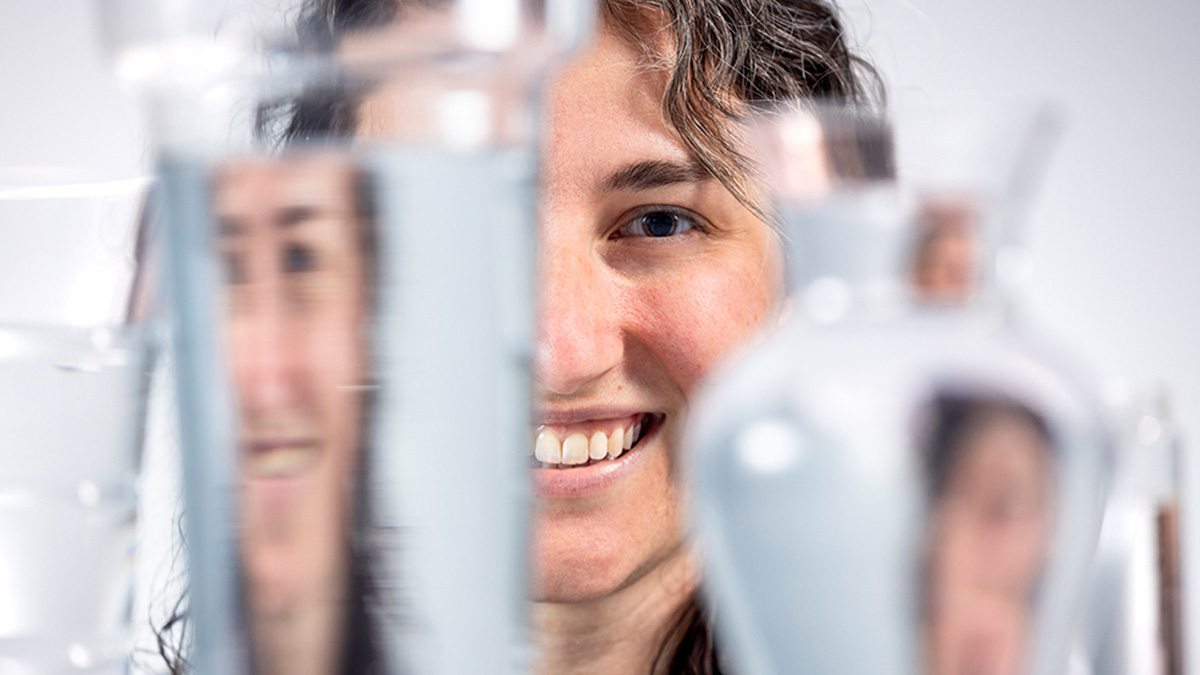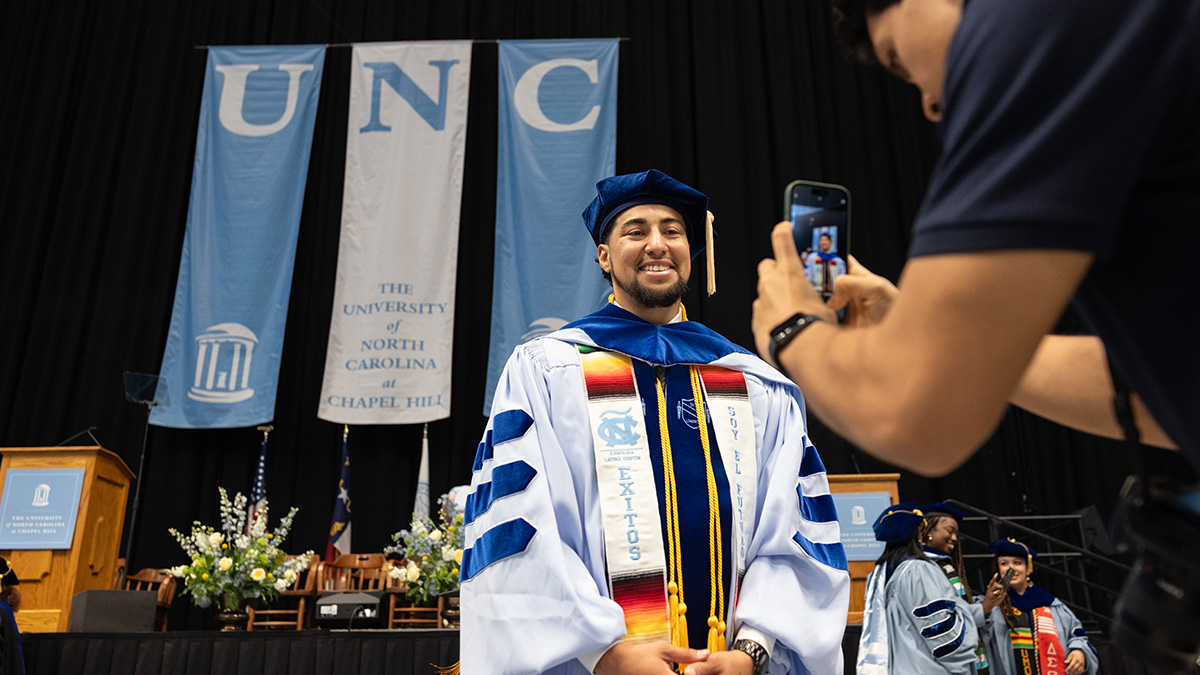Chemists harness hydrogen for clean energy
By splitting water into its component parts, CHASE researchers are creating more options for alternative fuels.

Researchers at the Center for Hybrid Approaches in Solar Energy to Liquid Fuels at UNC-Chapel Hill are developing methods to make hydrogen fuel — a clean, renewable energy source.
Creating hydrogen from water requires electricity, preferably generated in a renewable way. One solution is a particle suspension reactor, a reactor made up of particles suspended or mixed in a liquid, like sand floating in a glass of water. When combined with sunlight, they cause a chemical reaction — most commonly splitting water into hydrogen and oxygen.
Seeking to make a PSR better at harnessing the full spectrum of the sun’s energy, two innovative CHASE researchers looked to one of the key materials in solar panels — silicon. Jim Cahoon, Hyde Family Foundation Professor, and postdoctoral researcher Taylor Teitsworth, both in the College of Arts and Sciences’ chemistry department, created a silicon nanowire PSR.
Expanding the bounds of science
Using nanotechnology previously developed in Cahoon’s lab, Teitsworth synthesized a nanowire made of silicon. Thousands of times thinner than a human hair, that first wire contained up to 40 silicon solar cells and produced a volt of electricity. The electricity generated by the PSR splits water into its component parts, producing clean hydrogen to be used as an alternative energy source.
The technology has been an enormous success for creating hydrogen, and its potential expands far beyond that. Other CHASE researchers are learning how these PSRs might be used to generate liquid carbon fuels.
“The nice thing about this system is that it’s very customizable,” Teitsworth says. “We designed these reactors to split water because it was a demonstration we felt we could do, but we could change the design to do many other things.”
Liquid carbon fuels created by solar energy provide a carbon-neutral alternative to coal, oil and natural gas. But there is no single solution to alternative energy sources, Cahoon stresses, so any step forward has massive potential.
“Consumer vehicles will go the battery route. But if you think about something that requires large, heavy equipment, batteries don’t make sense,” he says. “They would have to be big, and you couldn’t charge them fast enough. In that example, we might need to use something like hydrogen. We will need different technologies to fit different needs.”
No matter where the project goes from here, Cahoon believes the importance lies in expanding the bounds of science, something he’s always been interested in.
“I’m really invested in the long-term development of the science of these particles, continuing to make them better and learn more about them, and pushing forward the technology at a fundamental level,” he says.
As for Teitsworth, she’s trained a new set of doctoral students in Cahoon’s lab to continue her work with silicon solar cells and has moved on to a new project within CHASE, focusing on using traditional solar panels to convert carbon dioxide into liquid fuels.







